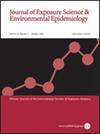Projecting the economic burden of health impacts of aircraft noise: a case study of Baltimore Washington International Thurgood Marshall Airport
IF 4.7
3区 医学
Q2 ENVIRONMENTAL SCIENCES
Journal of Exposure Science and Environmental Epidemiology
Pub Date : 2024-05-29
DOI:10.1038/s41370-024-00685-8
引用次数: 0
Abstract
While the Next Generation Air Transportation System (NextGen) in the United States optimizes flight patterns, it has led to the unintended consequence of increasing aircraft noise exposure in some communities near airports. Despite the evidence that chronic exposure to high noise levels produces detrimental health effects, potential adverse health consequences due to increased noise in the affected communities have not been adequately considered in aviation policy discussions. We assessed the long-term health and associated economic burden of increased aircraft noise caused by NextGen near the Baltimore-Washington Thurgood Marshall International (BWI) airport in Maryland. A probabilistic Markov model projected the incremental health and associated economic burden over 30, 20, and 10 years, comparing post-NextGen noise exposure levels to pre-NextGen levels. Health outcomes included cardiovascular disease (CVD), anxiety disorders, noise annoyance, and low birth weight (LBW). Noise exposure was categorized into four levels (<55 dB DNL, 55–60 dB DNL, 60–65 dB DNL, >65 dB DNL). A Monte Carlo simulation with 2000 iterations was run to obtain incremental burden estimates and uncertainty intervals. One-way sensitivity analyses for noise effect parameters were conducted. Increased aircraft noise exposure was estimated to produce (discounted) incremental mortality costs of $362 million, morbidity costs of $336 million, and losses of 15,326 Quality-Adjusted Life Years (QALYs) over the next 30 years. Sensitivity analyses revealed the greatest uncertainty for CVD outcomes.飞机噪音对健康影响的经济负担预测:巴尔的摩华盛顿瑟古德-马歇尔国际机场案例研究。
背景:美国的下一代航空运输系统(NextGen)在优化飞行模式的同时,也带来了意想不到的后果,即增加了机场附近一些社区的飞机噪声暴露。尽管有证据表明,长期暴露在高噪声水平下会对健康产生不利影响,但在航空政策讨论中,受影响社区因噪声增加而产生的潜在不良健康后果尚未得到充分考虑:我们评估了马里兰州巴尔的摩-华盛顿瑟古德-马歇尔国际机场(BWI)附近的 NextGen 带来的飞机噪声增加所造成的长期健康和相关经济负担:方法:采用概率马尔可夫模型预测了 30 年、20 年和 10 年的健康和相关经济负担增量,并将下一代系统后的噪声暴露水平与下一代系统前的水平进行了比较。健康结果包括心血管疾病 (CVD)、焦虑症、噪声烦恼和出生体重不足 (LBW)。噪声暴露分为四个等级(65 dB DNL)。进行了 2000 次迭代的蒙特卡罗模拟,以获得增量负担估计值和不确定性区间。对噪声影响参数进行了单向敏感性分析:据估计,飞机噪声暴露的增加在未来 30 年内将产生(贴现)3.62 亿美元的增量死亡率成本、3.36 亿美元的发病率成本和 15326 个质量调整生命年(QALYs)损失。敏感性分析表明,心血管疾病结果的不确定性最大:NextGen 是一个可以通过优化飞行模式提高机场运行效率的系统。虽然运行效率在很多方面都是有益的,但飞行模式和数量的变化也会产生噪声污染,这是政策决策中应该考虑的一个主要公共健康问题。本研究量化了在巴尔的摩-华盛顿国际机场附近社区实施 NextGen 后飞机噪声暴露增加对健康和经济的长期影响。我们的研究结果强调了考虑噪声污染对公众健康影响的重要性。
本文章由计算机程序翻译,如有差异,请以英文原文为准。
求助全文
约1分钟内获得全文
求助全文
来源期刊
CiteScore
8.90
自引率
6.70%
发文量
93
审稿时长
3 months
期刊介绍:
Journal of Exposure Science and Environmental Epidemiology (JESEE) aims to be the premier and authoritative source of information on advances in exposure science for professionals in a wide range of environmental and public health disciplines.
JESEE publishes original peer-reviewed research presenting significant advances in exposure science and exposure analysis, including development and application of the latest technologies for measuring exposures, and innovative computational approaches for translating novel data streams to characterize and predict exposures. The types of papers published in the research section of JESEE are original research articles, translation studies, and correspondence. Reported results should further understanding of the relationship between environmental exposure and human health, describe evaluated novel exposure science tools, or demonstrate potential of exposure science to enable decisions and actions that promote and protect human health.

 求助内容:
求助内容: 应助结果提醒方式:
应助结果提醒方式:


